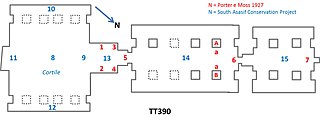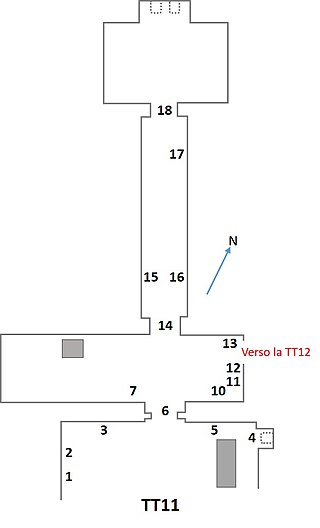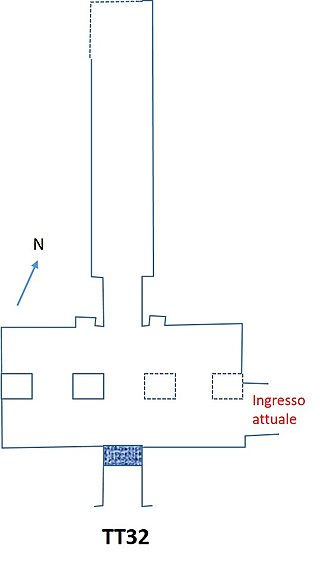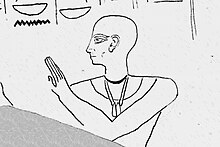
Thebes, known to the ancient Egyptians as Waset, was an ancient Egyptian city located along the Nile about 800 kilometers (500 mi) south of the Mediterranean. Its ruins lie within the modern Egyptian city of Luxor. Thebes was the main city of the fourth Upper Egyptian nome and was the capital of Egypt for long periods during the Middle Kingdom and New Kingdom eras. It was close to Nubia and the Eastern Desert, with its valuable mineral resources and trade routes. It was a cult center and the most venerated city during many periods of ancient Egyptian history. The site of Thebes includes areas on both the eastern bank of the Nile, where the temples of Karnak and Luxor stand and where the city was situated; and the western bank, where a necropolis of large private and royal cemeteries and funerary complexes can be found. In 1979, the ruins of ancient Thebes were classified by UNESCO as a World Heritage Site.

Luxor is a modern city in Upper (southern) Egypt which includes the site of the Ancient Egyptian city of Thebes.

The necropolis of Draʻ Abu el-Naga' is located on the West Bank of the Nile at Thebes, Egypt, just by the entrance of the dry bay that leads up to Deir el-Bahari and north of the necropolis of el-Assasif. The necropolis is located near the Valley of the Kings.

El-Assasif is a necropolis near Luxor on the West Bank at Thebes, Egypt, Upper Egypt. It is located in the dry bay that leads up to Deir el-Bahari and south of the necropolis of Dra' Abu el-Naga'.

Tomb TT192, located in the necropolis of El-Assasif in Thebes, Egypt, is the tomb of Kheruef, also called Senaa, who was Steward to the Great Royal Wife Tiye, during the reign of Amenhotep III. It is located in El-Assasif, part of the Theban Necropolis.

The ancient Egyptian noble Pabasa was chief steward of the God's Wife of Amun Nitocris I during the Saite Period. He is buried in tomb TT279, which is located in the El-Assasif, part of the Theban Necropolis, near Thebes.

The ancient Egyptian noble Ibi was chief steward of the God's Wife of Amun, Nitocris I, during the reign of the 26th Dynasty pharaoh Psamtik I.
The Theban Tomb TT36 is located in El-Assasif, part of the Theban Necropolis, on the west bank of the Nile, opposite to Luxor. It is the burial place of the ancient Egyptian Ibi, who was "Chief Steward of the Adorer of the God", during the reign of Psamtik I during the 26th dynasty.

The Theban Tomb TT390 is located in South El-Assasif, part of the Theban Necropolis, on the west bank of the Nile, opposite to Luxor. It is the burial place of the ancient Egyptian female scribe and Chief attendant of the Divine Adoratrice of Amun, Nitocris I, Irterau. Irterau lived during the reign of Psamtik I She was the daughter of the Divine Father of Amun Ipwer and his wife Tashaiu. In the court of the tomb her grandfather Zeho is also mentioned. Zeho was also a Divine Father of Amun.

The Theban Tomb TT37 is located in El-Assasif. It forms part of the Theban Necropolis, situated on the west bank of the Nile opposite Luxor. The tomb is the burial place of the ancient Egyptian Harwa, who was Chief Steward of the God's Wife of Amun, Amenirdis I, during the 25th Dynasty. Harwa was the son of the scribe Pedemut and his wife Estawert.

The Theban Tomb TT33 is an ancient Egyptian tomb. Located in El-Assasif, it is part of the Theban Necropolis on the west bank of the Nile, opposite to Luxor. The tomb is the burial place of the ancient Egyptian Padiamenope, who was Prophet and Chief Lector Priest during the 26th Dynasty.

The Theban Tomb TT11 is located in Dra' Abu el-Naga', part of the Theban Necropolis, on the west bank of the Nile, opposite to Luxor. It is the burial place of the ancient Egyptian Djehuty, who was Overseer of Treasury and of Works, during the 18th Dynasty reign of Hatshepsut.

The Theban Tomb TT32 is located in El-Khokha, part of the Theban Necropolis, on the west bank of the Nile, opposite to Luxor. It is the burial place of the ancient Egyptian official, Djehutymose.
The Theban Tomb TT34 is located in El-Assasif. It forms part of the Theban Necropolis, situated on the west bank of the Nile opposite Luxor. The tomb is the burial place of the ancient Egyptian official, Mentuemhat (Montuemhat).

Theban Tomb TT223 is located in South El-Assasif. It forms part of the Theban Necropolis, on the west bank of the Nile opposite Luxor. The site is the burial place of the ancient Egyptian Karakhamun. It was first discovered in 1820 by Wilkinson, Hey and Burton, then by Lepsius, it was reopened in 2001.
The Theban Tomb TT410 is located in El-Assasif, part of the Theban Necropolis, on the west bank of the Nile, opposite to Luxor. The tomb belongs to Mutirdis, the chief companion lady of the God's Wife of Amun during the time of Nitocris I, and Psamtik I of the 26th Dynasty. The tomb is located in the area of the royal tombs in the Valley of the Kings. The nearby monumental tombs of the Late Period have been noted for their special features.

Pedubast was an ancient Egyptian official during the 26th Dynasty. He is so far only known from his burial, found within the larger and earlier tomb complex of the mayor of Thebes Karabasken (TT391), located at South El-Assasif within the Theban Necropolis, in Upper Egypt.
Pedubast's burial was found in 2015 and announced shortly after. He was most likely the grandson of the well known chief steward of the God's Wife Pabasa who was buried in another large funerary complex at Thebes (TT279). Pedubast was overseer of Upper Egypt and chief steward of the God's Wife; in the latter position he managed the estates of the God's Wife of Amun, the leading religious figure in southern Egypt at the time. Pedubast only reinscribed some parts of the burial chapel of Karabasken. It seems that he was only for a short time in office having not enough time to build an own monumental tomb. The newly decorated parts include a door frame and a sun hymn. Fragments of his coffin were found too.

The Theban Tomb TT388 is located in El-Assasif, part of the Theban Necropolis, on the west bank of the Nile, opposite to Luxor.
The Theban Tomb TT414 is located in El-Assasif, part of the Theban Necropolis, on the west bank of the Nile, opposite to Luxor. The tomb was originally constructed in the El-Assasif necropolis for the use of Ankh-hor and his family. Ankhor was the Chief Steward to the God's Wife Nitocris during the 26th Dynasty. Ankh-hor is dated to the reigns of Pharaohs Psamtik II and Apries. The tomb was later usurped during the 30th Dynasty and the Ptolemaic Period.















